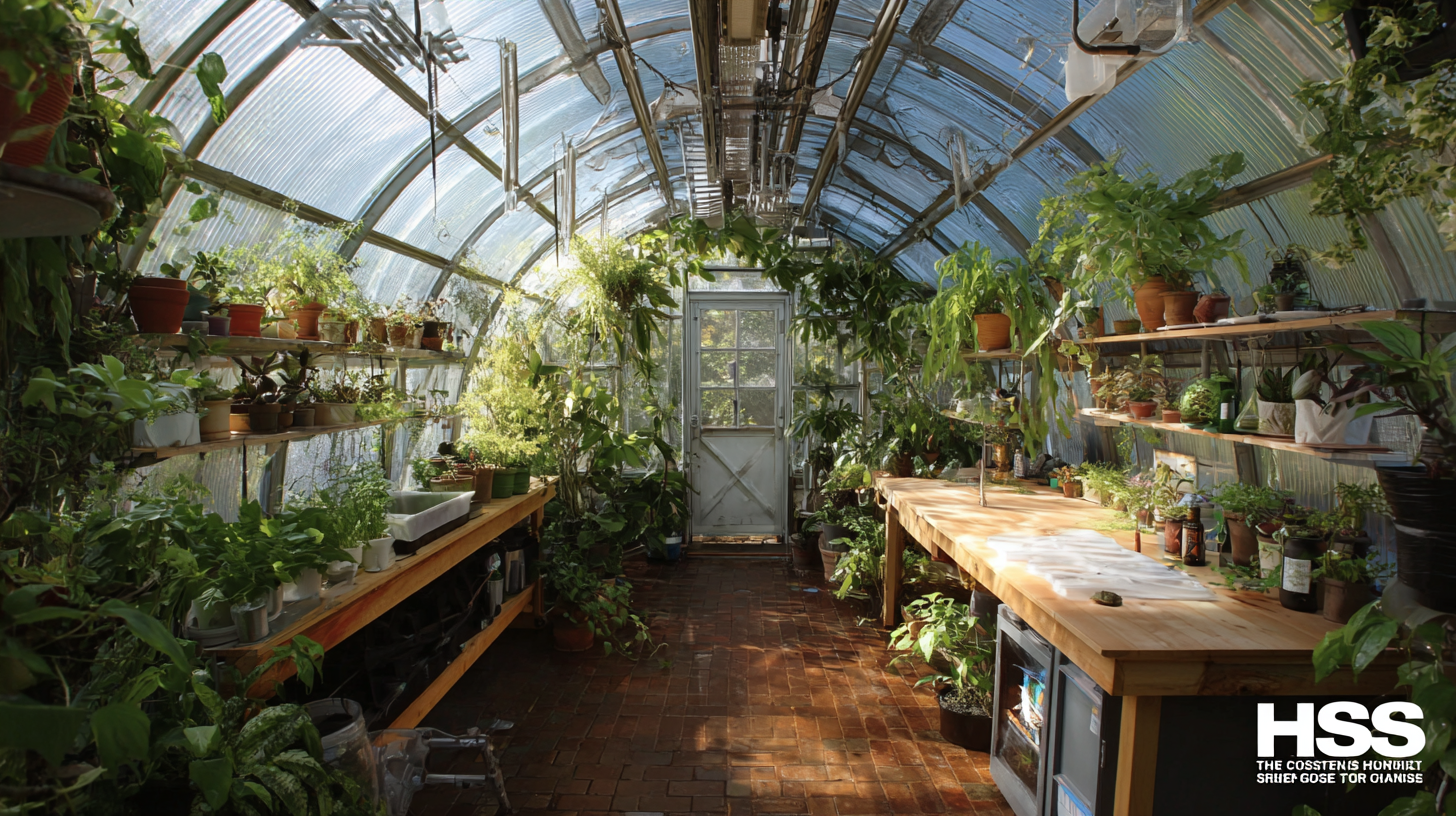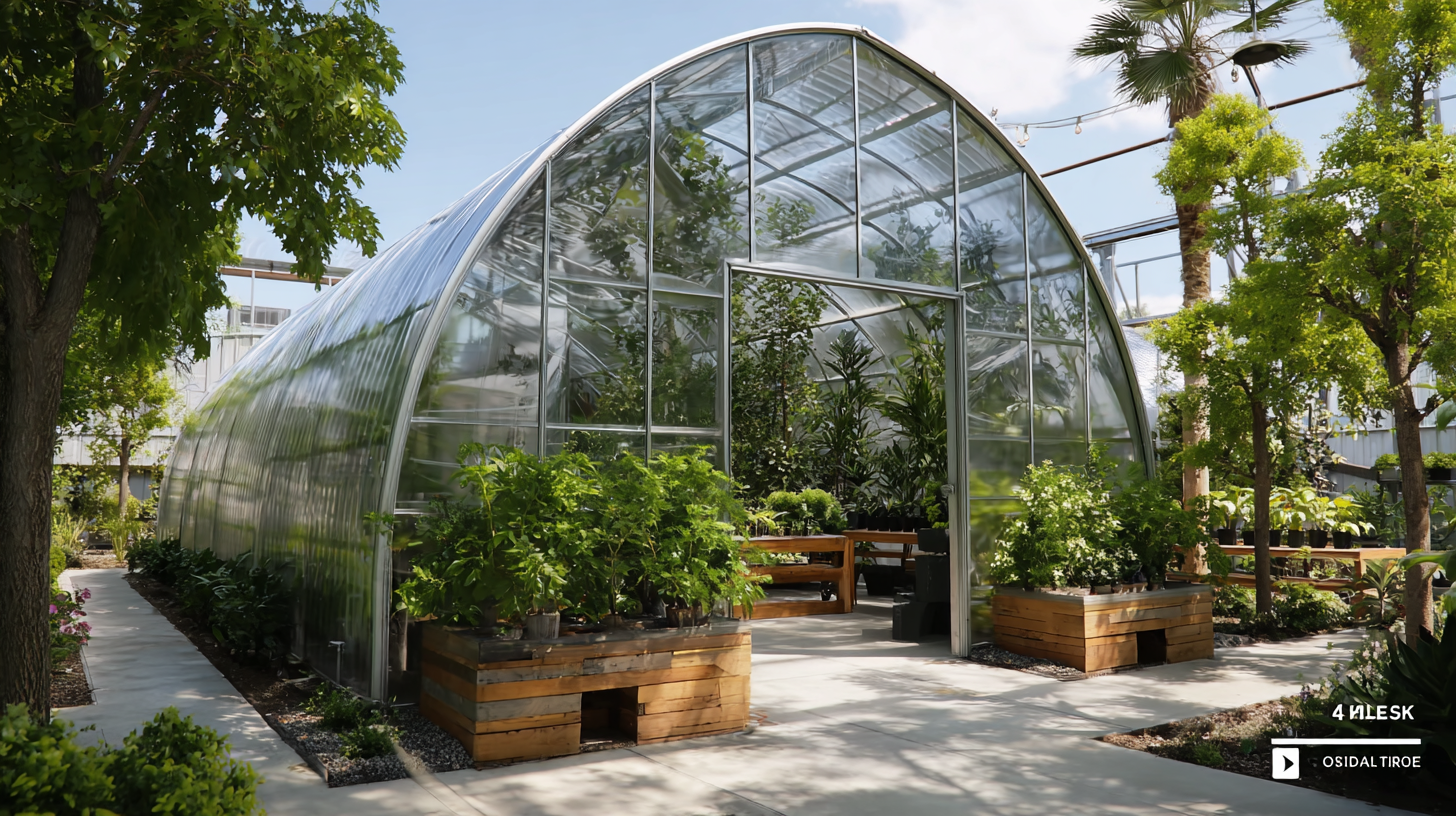
Unlocking the Secrets of the Best Arch Greenhouse: Technical Specs and Essential Setup Guide
As the demand for sustainable agriculture and efficient growing methods continues to rise, the popularity of the Arch Greenhouse is surging among both amateur and professional horticulturists. According to a report from the U.S. Department of Agriculture, greenhouse production has increased by 17% over the past decade, highlighting a growing trend towards controlled environment agriculture. With their distinctive curved structure making them highly aerodynamic and excellent at retaining heat, Arch Greenhouses provide the perfect solution for extending growing seasons and optimizing crop yields.

Whether you're looking to enhance food security in urban areas or simply wanting to cultivate your home garden year-round, understanding the technical specifications and essential setup recommendations for Arch Greenhouses is crucial to achieving success. In this blog, we will unlock the secrets to building the best Arch Greenhouse, equipping you with key insights and practical tips for effective setup and maintenance.
Understanding the Importance of Arch Greenhouses in Modern Agriculture
As modern agriculture evolves, the significance of arch greenhouses has become increasingly evident. Arch greenhouses provide an ideal environment for growing leafy vegetables, which are a staple in cities like Shanghai, where approximately 90% of such produce is sourced locally. This method allows urban farmers to optimize space while also enhancing the growth conditions for plants, resulting in fresher and healthier greens. Intriguingly, during the pandemic, these innovative structures ensured that residents had access to fresh vegetables while remaining at home, exemplifying their role in urban food security.

When setting up an arch greenhouse, it’s essential to consider the local climate and choose the right materials for optimal insulation. Proper ventilation is also crucial to maintain humidity levels, which can prevent the growth of mold and pests. According to industry reports, facilities with effective ventilation systems can see significant increases in yield—up to 30%—compared to those without.
Tips for maximizing your arch greenhouse include using raised beds to improve drainage and soil health, as well as incorporating companion planting strategies to deter pests naturally. Implementing these practices can lead to a more productive and sustainable urban farming experience.
Key Technical Specifications for Optimal Arch Greenhouse Performance
When it comes to maximizing the performance of your arch greenhouse, understanding the key technical specifications is crucial. First and foremost, consider the size and shape of the arch. Optimal dimensions typically range from 12 to 30 feet in width and can extend to various lengths, allowing you to customize based on your gardening needs. A well-designed arch should have a height that allows for adequate airflow and light penetration, ideally reaching 8 to 12 feet at the apex. This elevation helps promote a thriving environment for plants while minimizing the risk of humidity buildup and mold.

Another essential factor is the type of materials used in the structure. High-quality galvanized steel or aluminum frames offer durability and resistance to corrosion, ensuring longevity under various weather conditions. For the covering, UV-resistant polycarbonate panels or greenhouse grade poly film are excellent choices. These materials not only provide outstanding insulation but also allow the maximal amount of sunlight to filter through, which is vital for photosynthesis.
Additionally, consider incorporating vents and automated systems for temperature control to enhance the overall efficiency of your arch greenhouse setup. Paying attention to these specifications will lead to a thriving and productive horticultural space.
Essential Setup Guide: Step-by-Step for Your Arch Greenhouse
Setting up your arch greenhouse effectively is crucial for maximizing its potential in plant cultivation. Start by choosing a location with ample sunlight, as studies indicate that greenhouses positioned with south-facing orientation can gain up to 30% more sunlight compared to others, which directly impacts plant growth and yield. Next, consider the material of the greenhouse cover; polycarbonate panels offer better insulation properties than traditional polyethylene, maintaining an optimal temperature range. According to industry reports, arch greenhouses with good insulation can reduce heating costs by 50%, making them economically viable for extended use.
Once the structural components are in place, focus on internal setups. Efficient ventilation is essential, as poor airflow can lead to excess humidity and disease. A report from the American Society for Horticultural Science emphasizes that incorporating passive vents can improve air exchange by up to 50%, significantly boosting plant health. Furthermore, incorporating drip irrigation systems can lead to water savings of 30-50% compared to conventional methods, ensuring plants receive adequate moisture without waste. By following these steps, you'll lay a strong foundation for a thriving arch greenhouse ecosystem.
Maximizing Plant Growth: Climate Control and Ventilation Strategies
Creating an optimal environment for plants in an arch greenhouse hinges significantly on effective climate control and ventilation strategies. First and foremost, maintaining the right temperature is crucial for plant health and growth. Utilizing a combination of passive and active heating systems can help regulate temperature fluctuations throughout the day and night. For instance, thermal mass materials such as water barrels can absorb heat during the day and release it at night, shielding your plants from harsh temperature changes.
Ventilation is equally important, as it aids in the distribution of fresh air and prevents humidity buildup that could lead to mold or disease. Strategically placed vents, skylights, and fans can facilitate cross-ventilation, ensuring a steady airflow. Automated systems can monitor temperature and humidity levels, adjusting ventilation accordingly to create a stable microclimate. By fine-tuning these factors, growers can maximize their plants' potential, promoting vigorous growth and healthy yields.
Common Mistakes to Avoid When Setting Up Your Arch Greenhouse
When setting up an arch greenhouse, it's easy to overlook certain aspects that can lead to costly mistakes. One of the most common errors is improper site selection. Many beginners fail to assess the sunlight exposure and wind patterns adequately. It's crucial to position your greenhouse in a location that receives ample sunlight and is somewhat shielded from harsh winds to optimize plant growth and structural integrity.
Another pitfall is neglecting proper ventilation. Without adequate airflow, humidity can skyrocket, leading to mold and diseases. Many enthusiasts assume that a few vents will suffice, but a well-planned ventilation system is essential for maintaining a stable internal climate. Incorporating both passive and active ventilation options helps regulate temperature and humidity effectively.
Lastly, failing to account for drainage can lead to serious issues. Water pooling around the foundations can weaken the structure and create a hospitable environment for pests. Installing proper drainage solutions and ensuring the ground slopes away from the greenhouse will prevent water accumulation and promote a healthy growing environment. By avoiding these common mistakes, you can create a thriving arch greenhouse that supports successful gardening endeavors.
Unlocking the Secrets of the Best Arch Greenhouse: Technical Specs and Essential Setup Guide - Common Mistakes to Avoid When Setting Up Your Arch Greenhouse
| Feature | Description | Common Mistakes |
|---|---|---|
| Material | Durable galvanized steel frame with UV-resistant plastic covering. | Using low-quality materials that won't withstand weather conditions. |
| Size | Common sizes range from 10 feet to 30 feet wide and 10 feet to 100 feet long. | Not accounting for future expansion or plant growth. |
| Ventilation | Includes roof vents and side vents for airflow management. | Forgetting to install proper ventilation leading to overheating. |
| Foundation | Must be placed on a solid, level base to prevent movement over time. | Skipping foundation installation or using unstable ground. |
| Lighting | Natural sunlight is crucial, consider supplemental grow lights. | Neglecting to consider shade from nearby structures or trees. |
| Watering System | Drip irrigation or overhead systems to maintain moisture. | Inadequate planning for efficient irrigation methods. |
